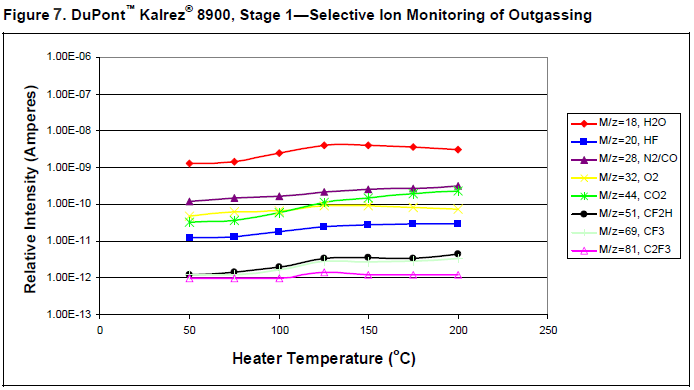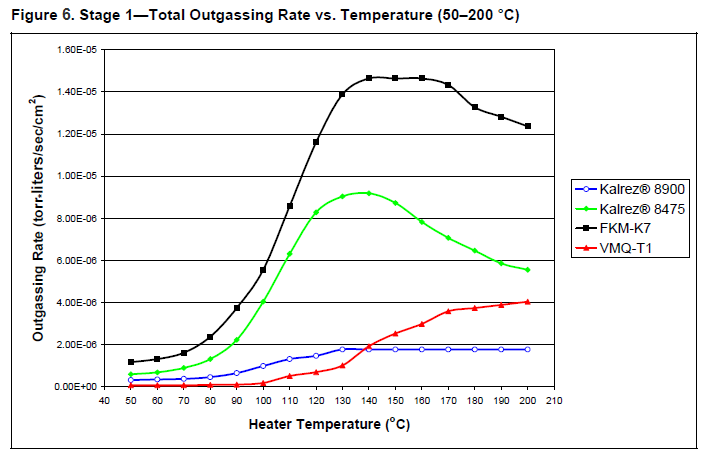
Failure Modes of Elastomers in the Semiconductor Industry

To deal with elastomer sealing problems that occur in the semiconductor industry, root cause failure analysis is critical to solving issues and preventing them from reoccurring. This type of analysis should be carried out as a joint effort between the end user and the seal supplier/manufacturer. Although it is important to find the solution as quickly as possible, the seal manufacturer cannot easily assist in root cause analysis without application details, including application temperatures, pressures, chemical environment and seal design. In addition, the seal manufacturer will need the failed part to properly conduct a root cause analysis.
The following sections detail common issues that occur with seals in the semiconductor industry. Examples are often given for o-rings, but are also applicable to other seal shapes.
Volatiles (Offgassing)
Adsorbed gases on the surface of an elastomer and volatiles from the interior may result in product contamination. When a process starts and the equipment is heating up, offgassing from the elastomer can cause contamination in high temperature semiconductor processes. A few options are available to address this issue, such as selecting an elastomer with inherently lower outgassing characteristics. Another option is to run the process chamber up in temperature, before beginning any processes steps, to burn off any volatiles or adsorbed species (especially water) from the elastomer. Lastly, an elastomer part can be preconditioned in an oven, by the part manufacturer, and sealed in a nitrogen environment (bag) until needed. This will minimize the adsorbed species on the surface of the elastomer and it will be ready for use “from the bag.”
The following two graphs, from the DuPont paper: Outgassing Characterization of Elastomeric Seals Used in Semiconductor Wafer Processing1. Presented at AVS Symposium, November 2009, these graphs show examples of offgassing rates and the type of constituents that typically outgas when an elastomer is heated. The first graph shows total outgassing rate for several elastomers when heated up to 200°C. The second graph shows the constituents of the outgassing for Kalrez® 8900.

Particle Generation
In seal locations where the elastomer seal is struck by plasma ions, seal erosion can be rapid. For these locations, having a filled elastomer is beneficial. Carbon black is a standard elastomer filler that is effective in protecting the elastomer backbone from ion attack, but carbon black particles can result in wafer contamination. Polymeric fillers are an option that offer improved elastomer backbone protection and cleanliness over organic fillers. However this approach still results in faster erosion than elastomers with solid organic fillers. Compromises in elastomer selection often have to be made to yield satisfactory elastomer seal life while minimizing process contamination.
Summary
Root cause failure analysis is an important process for solving elastomer sealing issues. Failure analyses require careful thought, and when completed, should be carefully documented for future reference. Many problems can be prevented by proper understanding of elastomers and their performance and applying that knowledge during equipment design. Proper groove design is facilitated by elastomer knowledge and can prevent many of the sealing issues that develop in the semiconductor industry. When sealing problems do occur, the end user and the seal supplier/manufacturer must share information and work closely together to solve the issues. In this way the seal failure can be addressed, corrected and prevented from reoccurring.
About the Author

Russ received a Bachelor of Science in Chemical Engineering from Columbia University in New York and MBA from the University of Delaware.

